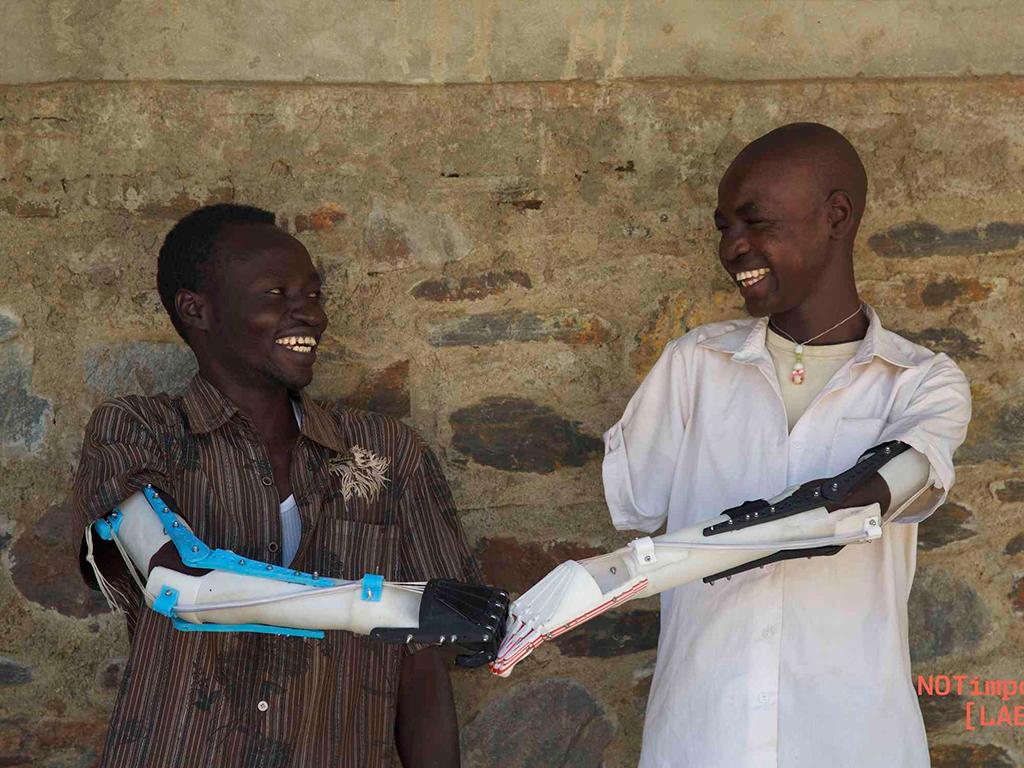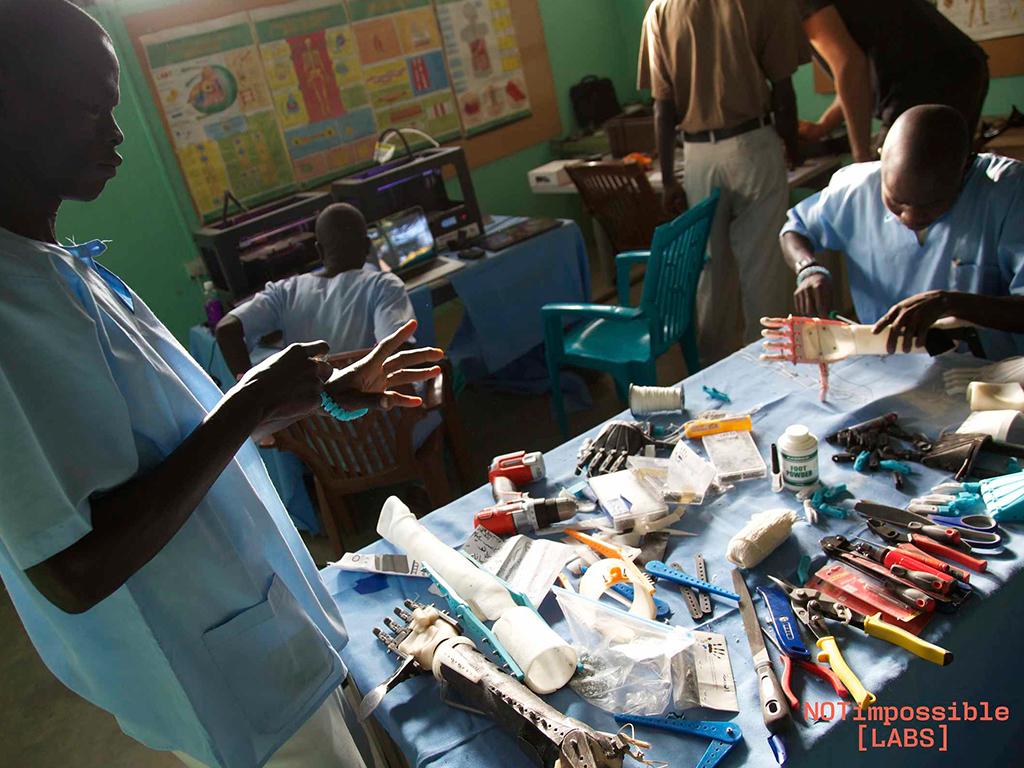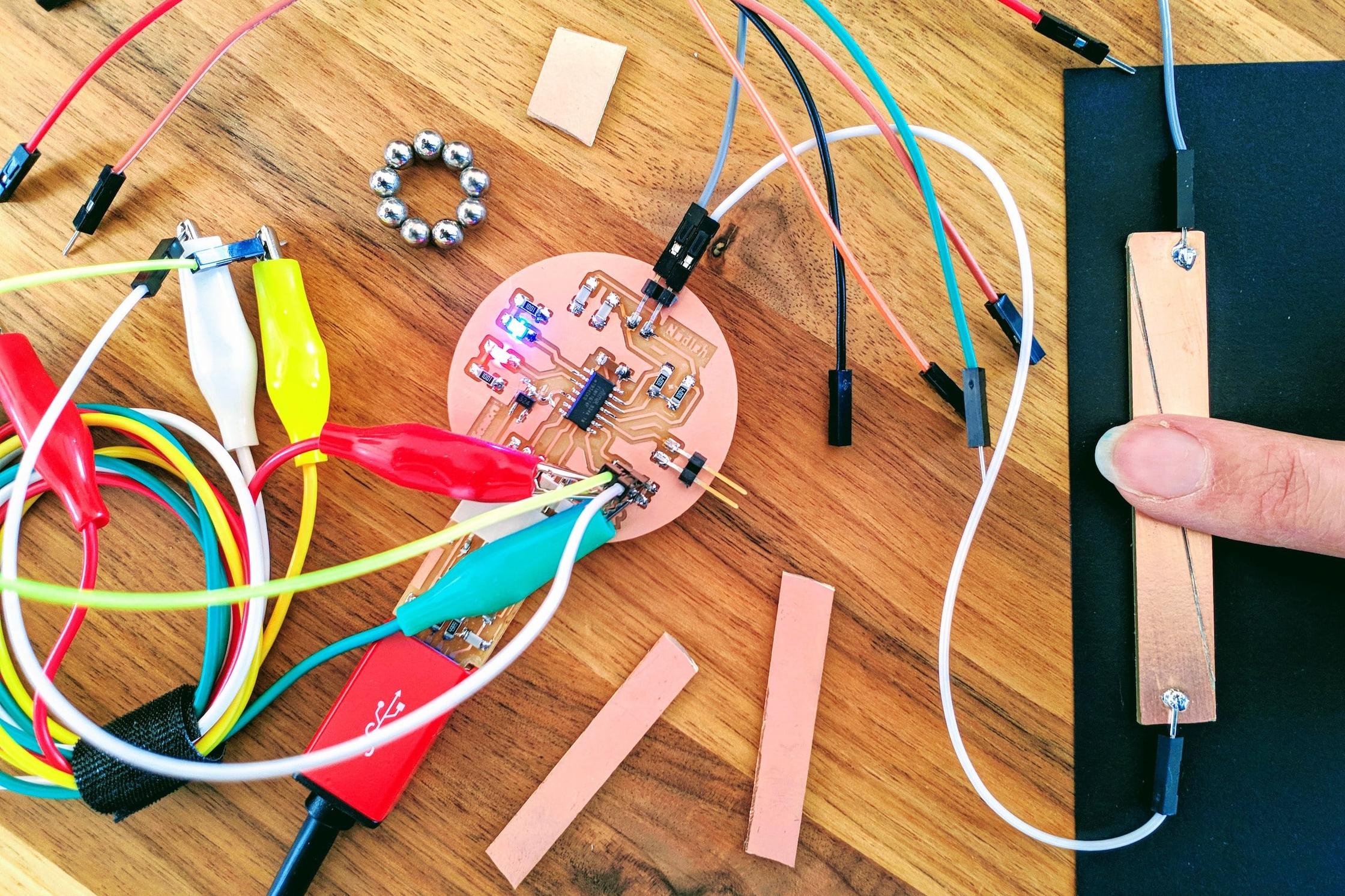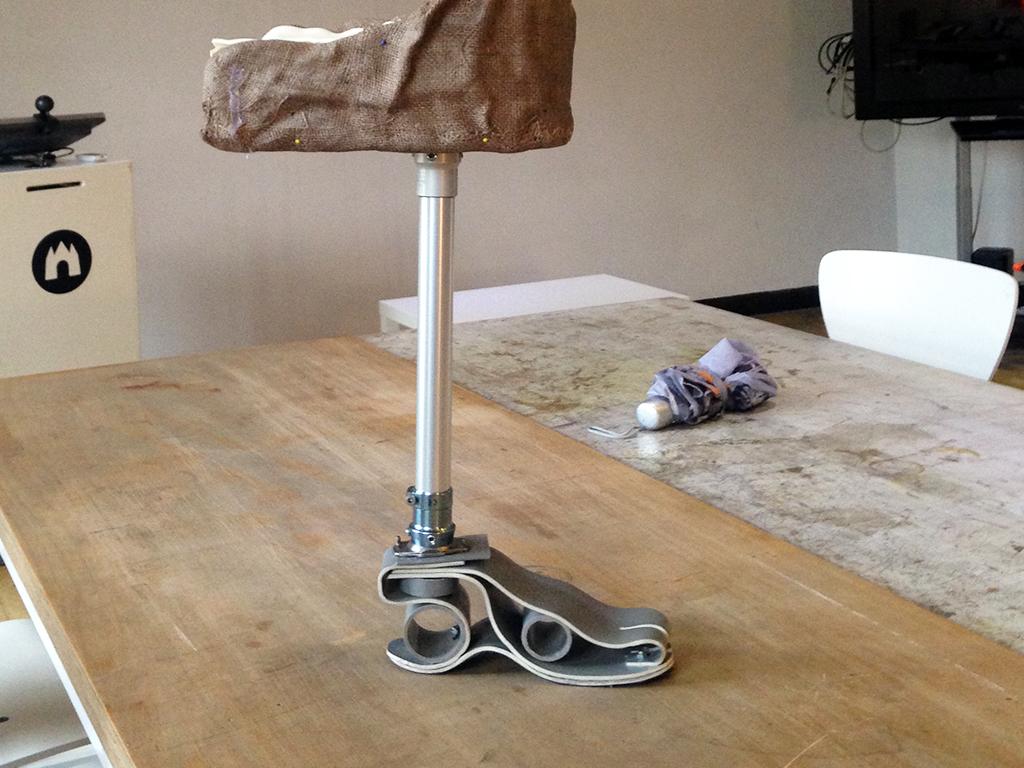A prosthetic arm that can be produced in around six hours with a 3D printer. In short, that is what 'Project Daniel' comprises, of the American Not Impossible Labs. It was created for Daniel Omar, a Sudanese 14-year-old who had his hands blown off by a bomb dropped by the Sudanese government in an attack on rebel forces. He’s one of 50,000 amputees in South Sudan.
The story behind the prosthesis started with a report by journalist Alex Perry in April 2012 for TIME. Among the people who read Perry’s article was Mick Ebeling, the co-founder and CEO of Not Impossible Labs, a research firm that aims to tackle daunting healthcare challenges using low-cost, open-source methods. Moved by the story, he ended up traveling to the Nuba Mountains, where he met Daniel. More important, Ebeling helped him, and ignited an effort that could help thousands of other people in Daniel’s situation.
While there Ebeling set up a lab at a local hospital. Using consumer-grade 3D printers, the lab produces low-cost prosthetic limbs, designed to be simple and affordable enough for anyone who needs one. In November 2013, Daniel got the first one, and others in Nuba have also received them since. Not Impossible is providing the open-source design free of charge, in hopes that amputees all over the world might benefit from it.
The prosthetic arm Daniel received cost around $100 to produce, and can be printed in about six hours. It can’t do everything that the limb it replaces did: Control over the fingers isn’t precise, it isn’t capable of lifting heavy weights and special attachments are required for jobs such as holding utensils. In the future, refined versions of the design may improve on its functionality.
Already, though, it’s capable of restoring a large measure of the independence that amputees lose along with their limbs. After receiving his new arm, Daniel fed himself for the first time in two years. And now he’s helping to produce additional limbs for other recipients.



